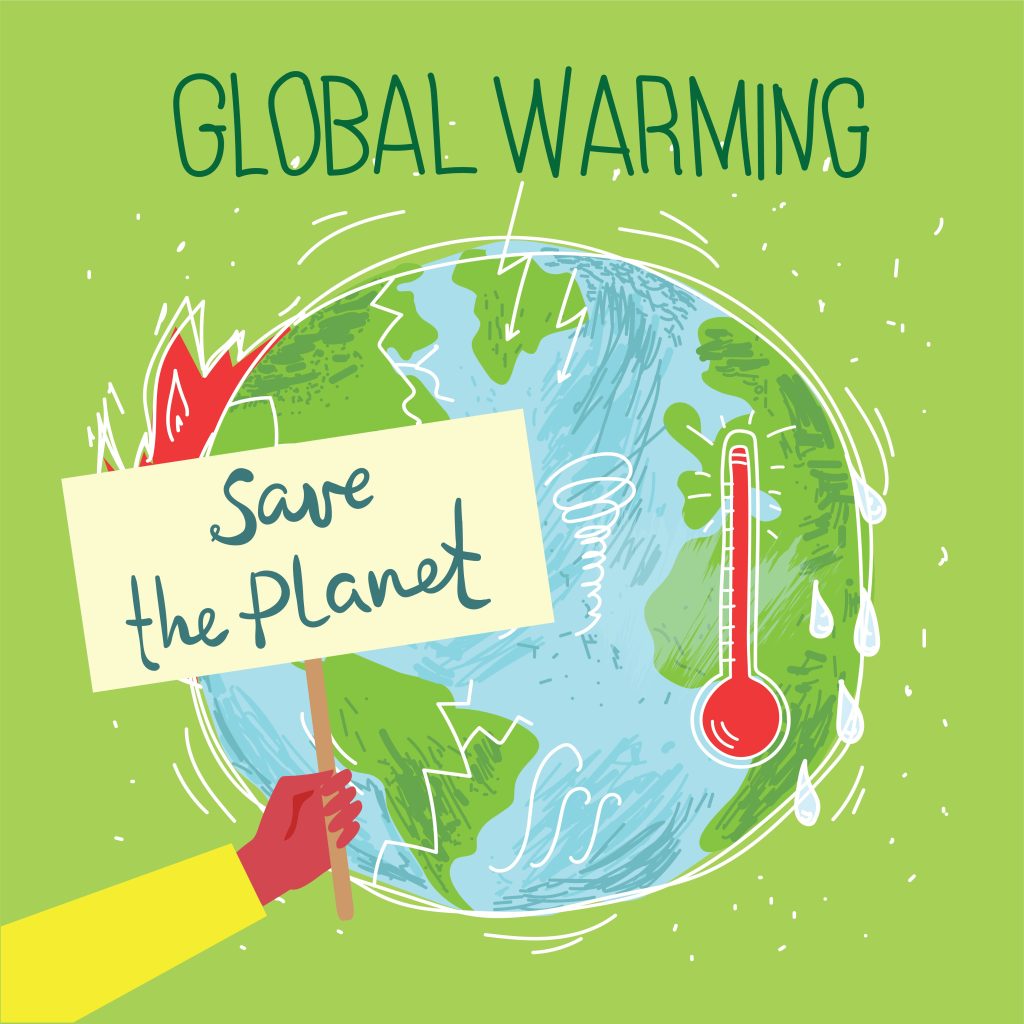Version : Dec 2023

Introduction
The Paris Agreement, adopted in 2015, aimed to limit global warming to well below 2 degrees Celsius above pre-industrial levels and to pursue efforts to limit the temperature increase to 1.5 degrees Celsius. During the 1850-1900 period, the average global temperature generally hovered around 13.5 degrees Celsius. However, as of December 2023, the world is still on track for a temperature increase of around 2.7°C by the end of this century, unchanged since 2021. The Earth is projected to reach the 1.5 degrees Celsius threshold as early as 2030 and consistently exceed it by mid-century. Despite government promises, warming projections have not improved since the Glasgow conference two years ago, amid worsening climate impacts. In 2023, every continent experienced record-breaking heat, wildfires, tropical cyclones, or other extreme events.
For context, the Paris Agreement was sparked by growing international concern about the impacts of climate change. Prior to the Paris Agreement, the international community had made several attempts to address climate change, most notably through the Kyoto Protocol. However, these efforts were largely unsuccessful due to a lack of binding commitments and the exclusion of major emitters like the United States and China.
The Paris Agreement marked a significant shift in the global approach to climate change. Unlike previous agreements, the Paris Agreement includes commitments from all countries, not just developed ones, and sets a clear and ambitious goal to limit global warming. Since its adoption, the Paris Agreement has catalyzed action around the world, with countries putting forward more ambitious climate targets and making significant investments in clean energy. However, current national climate targets are still far from sufficient to limit warming to 1.5C or even 2C.
Global Average Temperatures
The global average temperature has been steadily increasing over the past few decades. The National Oceanic and Atmospheric Administration (NOAA) reports that the combined land and ocean temperature has increased at an average rate of 0.08 degrees Celsius per decade since 1880. However, the average rate of increase since 1981 has been more than twice as fast: 0.18 degrees Celsius per decade.
As of 2023, the global temperature increase is at 1.3°C. The Climate Action Tracker (CAT) projects that under current policies and actions, the global temperature increase by 2100 will be 2.7°C. If all announced targets including net zero targets, Long-Term Strategies (LTSs), and Nationally Determined Contributions (NDCs) are fully implemented, the global temperature increase by 2100 could be limited to 1.8°C.
The $100 Billion Fund (Annual Basis)
The Paris Agreement, adopted in 2015, restated a commitment made in 2009 that the world’s richer countries should provide $100 billion annually by 2020 to help developing nations deal with the effects of climate change and build greener economies. This commitment is known as the climate finance goal.
The funds are intended to support developing countries in two main ways: mitigation and adaptation. Mitigation involves reducing greenhouse gas emissions to limit future global warming, while adaptation involves making adjustments to reduce the vulnerability of human and natural systems to actual or expected climate change impacts.
The funds are mobilized through various sources, including public and private, bilateral and multilateral sources, such as the Green Climate Fund, and alternative sources. The Green Climate Fund, for example, is the world’s largest climate-dedicated multilateral fund.
There are concerns about the quality of the climate finance provided, with developing countries needing more finance in the form of grants and for adaptation. Grants are preferable to loans because they don’t add to the debt burden of these countries. Adaptation efforts help countries adjust to the impacts of climate change, such as rising sea levels and extreme weather events, which are crucial for their long-term resilience.
In terms of the mechanism to use the fund, the Financial Mechanism of the UNFCCC, which is accountable to the Conference of the Parties (COP), decides on climate change policies, program priorities, and eligibility criteria for funding. The Paris Agreement mandates many funds, such as the Green Climate Fund and Adaptation Fund, with a special role in the implementation of the Agreement. These funds enable developing countries to directly access funding.
The Gap Between Ambition and Action at Company Level
Some companies have used climate change and sustainability to attract investment, but they have struggled with execution, leading to limited outcomes. This gap between ambition and action is possibly due to several factors:
- Corporate Structure and Culture: Many companies face challenges in scaling their sustainability efforts due to internal resistance and lack of commitment to sustainability at the core of their business.
- Lack of Integration: Often, sustainability initiatives are treated as separate from core business operations, which can limit their impact and effectiveness.
- Short-term Focus: Companies may prioritize short-term financial gains over long-term sustainability goals, which can hinder progress in addressing climate change and other environmental issues.
- Insufficient Resources and Expertise: Companies may lack the necessary resources, expertise, or organizational capacity to effectively implement and manage sustainability initiatives.
Recent Developments
In 2023, the UK government, under Prime Minister Rishi Sunak, made a series of U-turns on key climate policies. These included delaying the 2030 ban on the sale of new petrol and diesel cars by five years, loosening the 2035 phaseout of gas boiler sales, and removing the obligation for landlords to insulate their rental properties to higher standards. These policy reversals have been criticized for potentially jeopardizing the UK’s legally binding emissions targets. The UK’s climate watchdog has warned that these changes will make achieving net zero considerably harder and will keep energy bills high for millions of households.
In Indonesia, coal burning increased by 33% in 2022 compared to the previous year, contributing to a 20% increase in the country’s carbon emissions from fossil fuels. This increase in coal burning aligns with efforts to boost economic recovery following the COVID-19 pandemic, including the slate of new coal-fired power plants that recently came online as well as the expansion of the nickel industry. Despite a pledge to stop building new coal-fired power plants from 2023 and to be carbon neutral by 2050, Indonesia’s coal consumption and emissions from burning fossil fuels are projected to continue rising.
In Saudi Arabia, despite the country’s commitment to reduce carbon emissions by 278 million tons per annum by 2030 and achieve net zero emissions by 2060, the country is doing little to decarbonize its economy. Emissions are projected to significantly rise by 2030, and the national oil company, Aramco, is planning to increase oil output in the coming years. Despite announcing ambitious renewable energy targets, Saudi Arabia has made little tangible progress in the last decade.
This policy brief is proprietary to Prezytion. The analyses, conclusions, and recommendations contained in this brief are based on the information available at the time of publication and do not purport to contain or incorporate all the information that may be relevant or necessary for every user. The brief is intended for the exclusive use of the individual or entity that downloaded it and may not be copied, shared, sold, or redistributed in any form without the prior written consent of Prezytion. Any unauthorized use or dissemination of this brief is strictly prohibited. Prezytion and its affiliates make no representation or warranty, express or implied, as to the accuracy, reliability, completeness, or currency of the information in this brief. Users are responsible for assessing the relevance and accuracy of the content of this brief. Prezytion and its affiliates will not be responsible for any damage, loss, or liability incurred as a result of using or relying on the information or recommendations contained in this brief. By using this brief, you agree to these terms and conditions.
